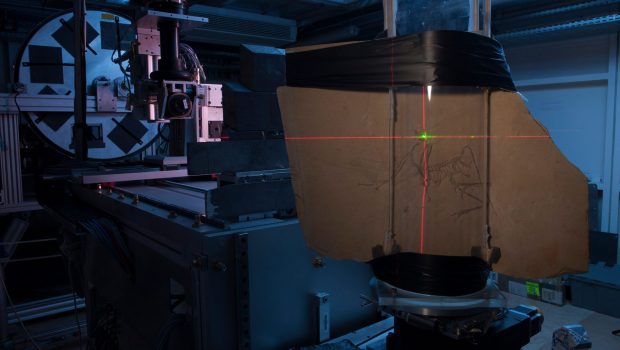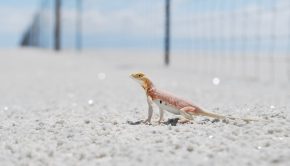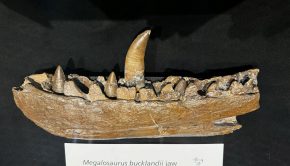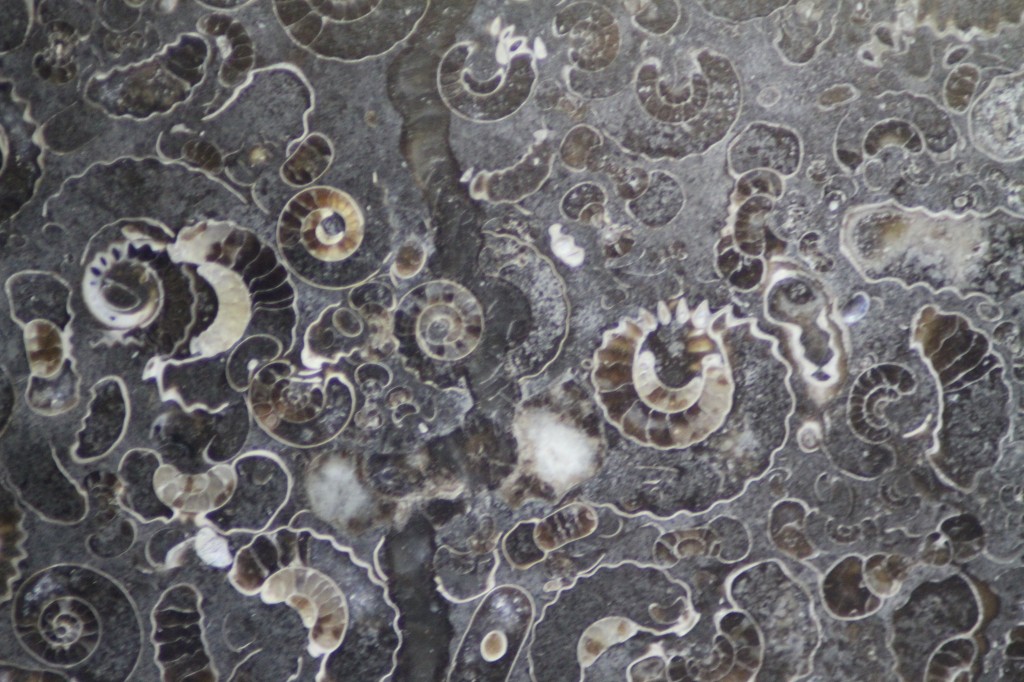Episode 87: Archaeopteryx
Archaeopteryx is perhaps one of the most iconic taxa in the fossil record. Exclusively found in the Late Jurassic Solnhofen Lagerstätte in Bavaria, Germany, it is a crucial taxon for understanding the relationship between dinosaurs and birds. Furthermore, it is critically positioned to inform us how flight evolved in this group.
Now, a new study published in Nature Communications, has been inferring how Archaeopteryx was able to fly by examining details of its bones. In this interview, we are joined by lead author Dennis Voeten, Palacký University, who shares with us his hypotheses, methods and results.
Podcast: Download (Duration: 41:01 — 57.2MB)
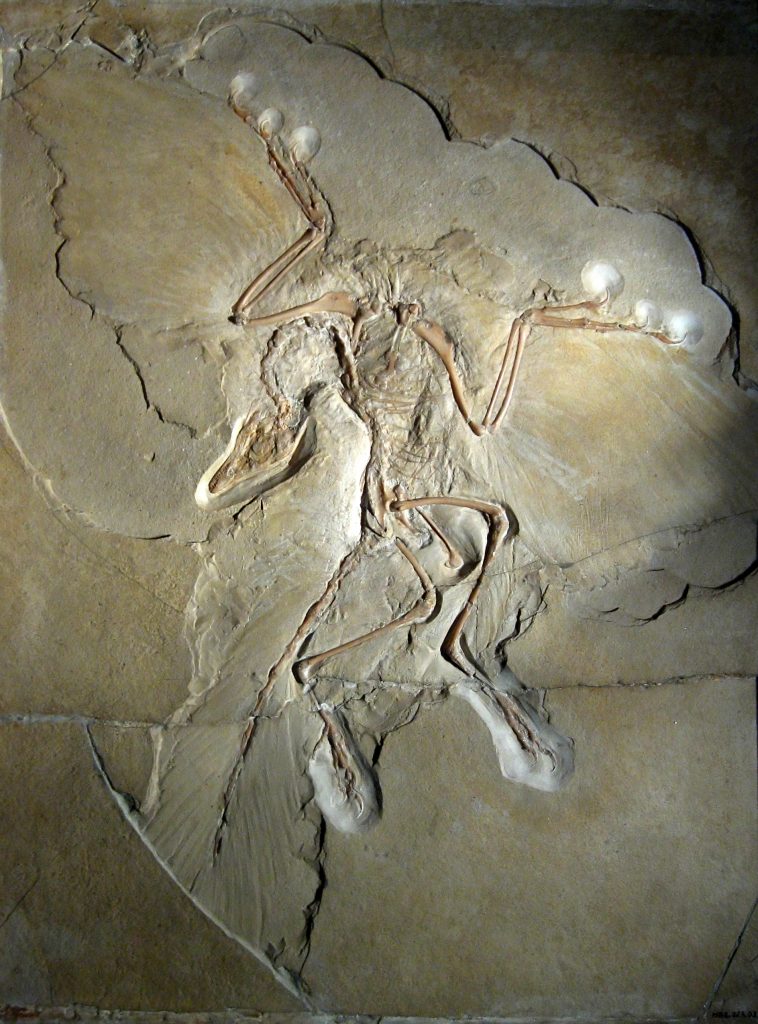
Archaeopteryx lithographica, one of the world’s most iconic fossils. ‘Berlin specimen’ displayed at the Museum für Naturkunde in Berlin. Image: H. Raab CC BY-SA 3.0
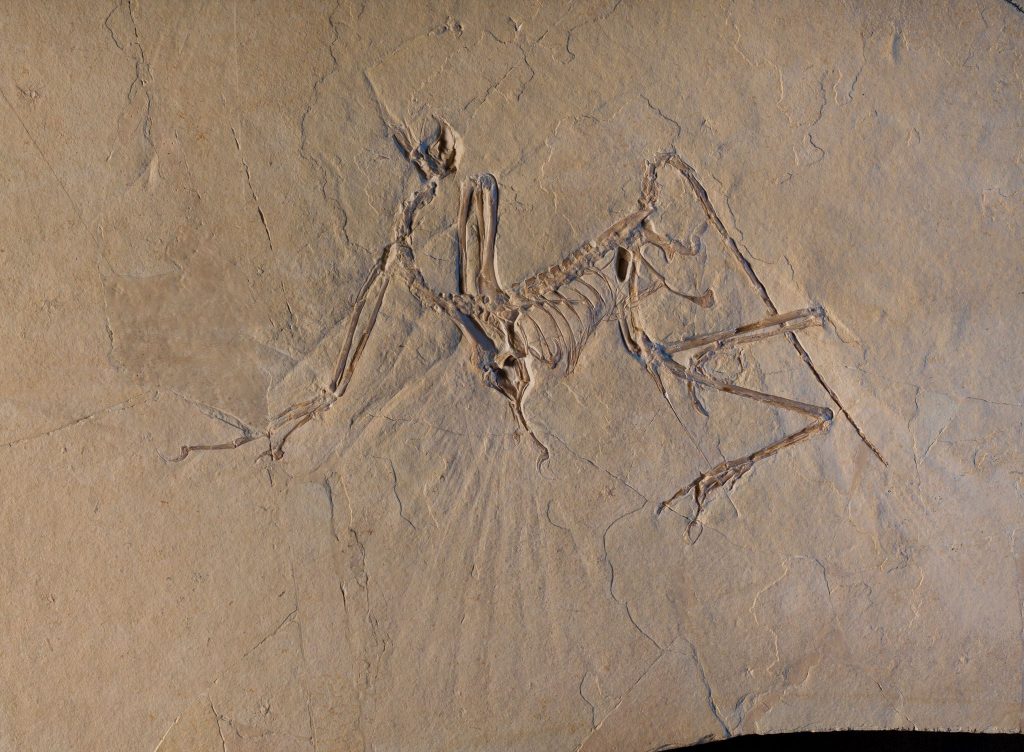
The ‘Munich specimen’. It preserves a partial skull (top left), shoulder girdle and both wings slightly raised up (most left to centre left), the rib cage (centre), and the pelvic girdle and both legs in a “cycling” posture (right); all connected by the vertebral column from the neck (top left, under the skull) to the tip of the tail (most right). Imprints of its wing feathers are visible radiating from below the shoulder and vague imprints of the tail plumage can be recognised extending from the tip of the tail.
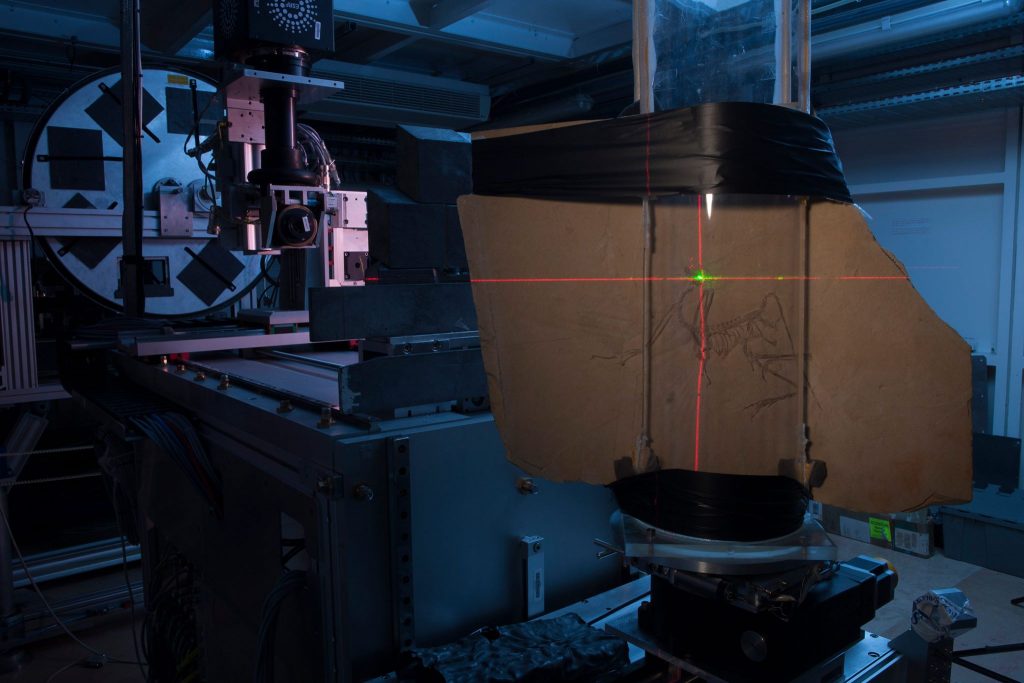
The ‘Munich specimen’ at beamline ID19 of the ESRF. The limestone plate was carefully mounted on a rotating sample stage and the beam is here centered on the skull using lasers. The X-ray beam, coming from the right of the picture, travels through the sample and arrives at the detector (visible left) where a camera records the signal.
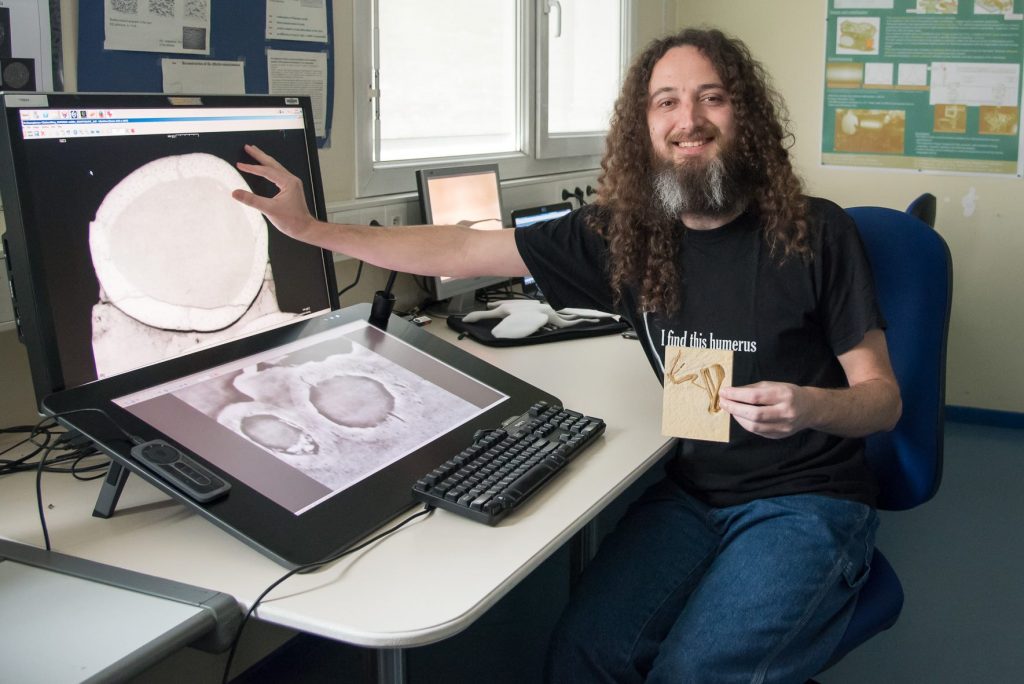
Dennis Voeten indicates the bone wall thickness of the “Chicken Wing” specimen of Archaeopteryx on the top computer screen for comparison against the bone walls of a primitive pterosaur on the bottom screen. A three-dimensional model of the “Chicken Wing” is held up, the referred bone cross section is that of the humerus, the uppermost arm bone visible most right on the 3D-printed model.
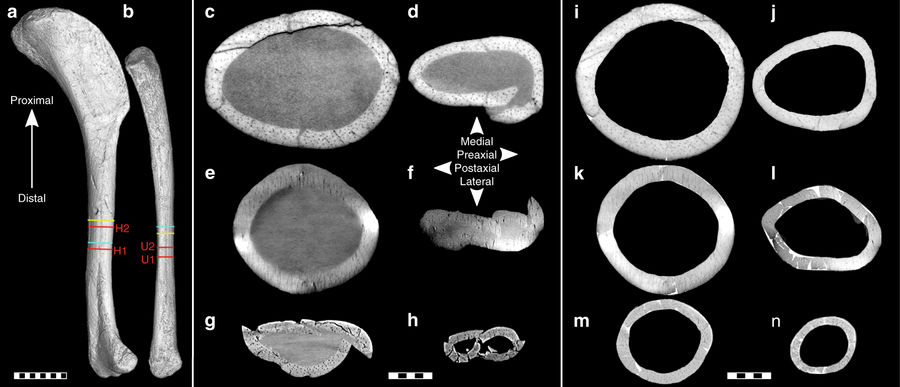
Archaeopteryx humeral and ulnar virtual cross sections used in this study. a Right humerus and b right ulna of the ninth (Bürgermeister–Müller) specimen in lateral, respectively, medial view, with virtual sampling locations (red) and relative sampling locations in seventh (Munich) specimen (light blue) and fifth (Eichstätt) specimen (yellow). c–h Virtual cross sections, as preserved, with optimised intraosseous contrast, of (c) right humerus (H2) and (d) right ulna (U2) of ninth specimen, (e) right humerus and (f) right ulna of seventh specimen, and (g) left humerus and (h) left ulna of fifth specimen. i–n Reconstructed cross-sectional geometry, with optimised contrast of bone margins, of (i) humerus and (j) ulna of ninth specimen, (k) humerus and (l) ulna of seventh specimen, and (m) humerus and (n) ulna of fifth specimen; pure white indicates supplemented fragments. Morphological orientation applies to all sections (c–h). Scale bar (a, b) 10 mm; scale bars (c–n) 1 mm.
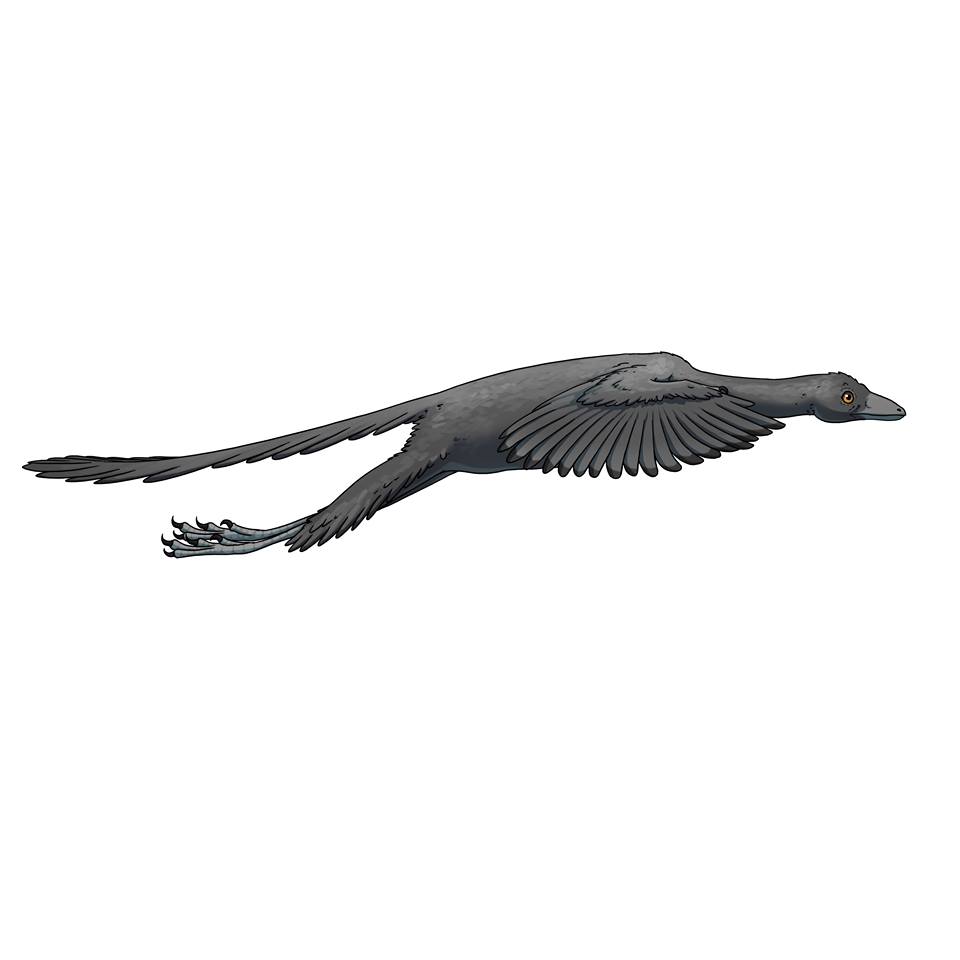
The cross sections of the bones of Archaeopteryx reveal it had most in common with birds such as pheasants which use short-bursts of flapping to overcome obstacles or escape predators. This style of flight can therefore be inferred. Reconstruction: Jana Růžičková

